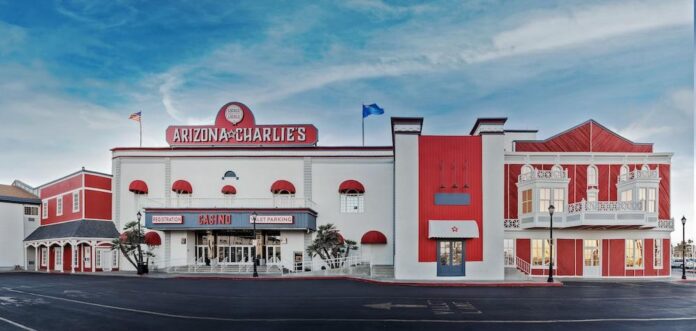Golden Entertainment’s Q2: A Mixed Bag for Las Vegas Operations
Golden Entertainment recently released its financial results for the second quarter, shedding light on both successes and challenges as the Las Vegas casino landscape continues to evolve. With a focus on neighborhood casinos, the report indicated a strong performance in local markets, even as broader tourism trends on the iconic Strip led to revenue dips.
Steady Growth in Local Casino Revenue
Golden Entertainment’s operations achieved a noteworthy $163 million in revenue, reflecting a 3% increase compared to the previous year. Impressively, this growth is largely attributed to the company’s two Las Vegas local casinos, which saw their EBITDA rise by over 9%. Charles Protell, the company’s president and CFO, cited these local establishments as the backbone of their financial performance, marking their highest quarterly EBITDA in two years. The shift towards catering to local residents has clearly paid off, as evidenced by improvements in margins, which climbed 170 basis points to over 46%.
Effects of Tourism Slowdown on the Strip
Despite success in local venues, Golden faced challenges from a drop in tourism on the Las Vegas Strip. Protell noted that the lower revenue was significantly affected by an underwhelming table-game hold in Laughlin and the much-discussed summer slowdown. Revenue for the casino segment fell 3%, and EBITDA dipped by 5%. This contrast highlights the precarious balance Golden Entertainment must manage between local and tourist-driven revenues.
Local Events Bring Boosts, but Challenges Persist
Interestingly, while Laughlin’s event calendar featured attractions like concerts and rodeos that drew crowds, the venue’s table-game hold was below expectations, negatively impacting EBITDA by approximately $1.5 million. Protell indicated that had the hold normalized, the financial results for Laughlin would have showcased stronger year-over-year performance. This underscores the volatility that can occur even when attendance appears robust.
Mixed Signals from The Strat
At The Strat, Golden Entertainment experienced a rise in EBITDA in the early months of the quarter. However, difficulties emerged as June brought a notable decline in occupancy rates, dropping to 60% from 76% the previous year. This trend was consistent with the broader slowdown in Strip tourism. Protell managed to limit EBITDA decline to just 5%, attributing successful cost management as a key factor amid challenging market dynamics. Early indicators show a gradual stabilization in bookings for August, as optimism builds for the fourth quarter.
Tavern Business Faces Competitive Pressures
In the tavern segment, Golden Entertainment faced headwinds, with revenue declining 7% year-over-year. Protell had previously cautioned that the promotional landscape could dampen performance, and the results confirmed this concern. Revenue fell sharply in April, compounded by lower hold rates and declining volume during late-night shifts. However, in July, there were signs of stabilization in tavern EBITDA, suggesting that reduced promotional activities may offer a pathway to recovery.
Optimism for Future Growth
Looking ahead, Protell expressed confidence in the potential for the tavern business to rebound in the latter half of the year. The company has plans for two new builds over the next six months, which could invigorate performance. With anticipated increases in Strip visitation and forthcoming tax relief legislation aimed at supporting workers in the casino and hospitality sectors, Golden Entertainment believes that both organic growth and local demand may see significant benefits moving into 2026.
Conclusion: Navigating an Ever-Changing Landscape
Golden Entertainment’s recent quarterly results paint a complex picture of the Las Vegas gaming environment. While local operations thrive, the overarching impact of tourism fluctuations and competitive pressures highlight the unpredictable nature of the industry. As the company strategically positions itself for the future, its continued focus on local clientele and adaptation to market challenges will be crucial for sustained success.
